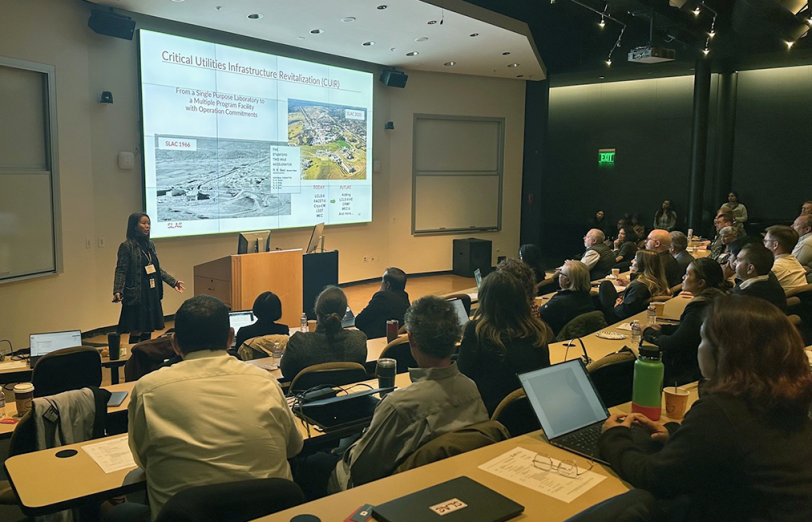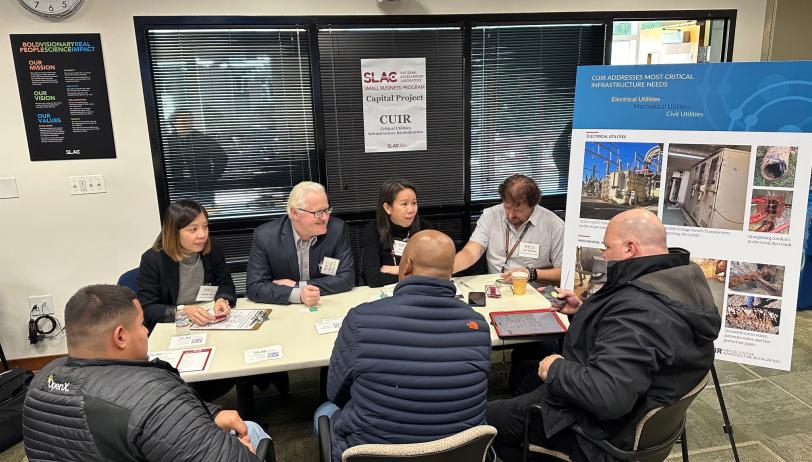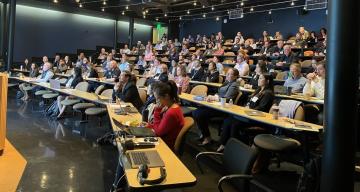SLAC Project Opportunity Day 2023
Thank You for joining us for SLAC’s Project Opportunity Day on November 29, 2023! The day was filled with so many Opportunities.
- An Opportunity to learn about SLAC as a vibrant multiprogram laboratory that explores how the universe works at the biggest, smallest, and fastest scales.
- An Opportunity for SLAC to highlight its commitment to creating an environment conducive to innovative research and attracting a diverse workforce and supply base.
- An Opportunity to understand the importance of building long-term partnerships with suppliers, prioritizing safety, adhering to a high standard of quality, and fostering collaboration to meet SLAC’s mission and vision.
- An Opportunity for you to gain insight on how to draft a strong proposal, navigate the procurement process and the important role of small businesses.
- An Opportunity to gain a deeper understanding of SLAC’s mission, upcoming projects and procurements and engage with project directors, project managers and procurement specialist.
Questions from suppliers can be sent via email to suppliers@slac.stanford.edu


Frequently Asked Questions
SLAC acquisition needs are primarily posted on SAM.gov as either a Pre-Solicitation, Sources Sought, or a Contract Opportunity posting. SLAC Procurement is currently looking at solutions to post these same procurement actions on the SLAC website. We recommend searching for SLAC procurement opportunities using “Menlo Park” or our Zip Code “94025”.
Award duration for contracts over $25M is long due to internal and Department of Energy (DOE) reviews required throughout the procurement acquisition process. Feedback has been provided to the DOE to mitigate the risks associated with a long award lead time.
Please check back mid-December 2023. We will also send an email notification to all supplier attendees to the Project Opportunity event when the form is available.
Each competitive solicitation will identify its own set of Evaluation Factors (Technical and Business) and the Evaluation Method in the Request for Proposal (RFP) package. Technical factors are determined per project, while Business Factors will typically focus on price, schedule, required documentation, and/or terms and conditions acceptance.
For proposals that will be evaluated under the LPTA method, SLAC will award to the lowest price offered out of the technically acceptable proposals received. For BVTO evaluations, SLAC will weigh both technical and business factor evaluations to determine the overall best value award for the procurement.
While the Evaluation Method is dependent on the project, BVTO method is generally used for acquisitions above $250K (SAT). All Architect/Engineer (A/E) awards will be determined under the BVTO method.
Time and Material contracts are not considered for construction projects due to compliance issues. SLAC is exploring other methods, such as CMGC, but at this time all construction projects at SLAC will be awarded as Firm Fixed Price. SLAC has more contract type flexibility on services and certain high value science/equipment procurements.
Project delivery method is determined in collaboration with the projects during the acquisition planning phase. The team will account for items such as current market conditions, project funding status and timelines to determine the final delivery method for each project. SLAC will have projects under the Design-Build method, but others may be under the Design-Bid-Build method.
Green Work is associated with activities that are commonly performed by the public and controlled by means well known to the workers, without requiring any permits and where specific ESH training is not required. Examples of Green Work activities include technical or administrative office work, performing visual inspections, or servicing office equipment such as printers and copiers.
Yellow Work is work that may require coordination between 1 or 2 work groups or trades simultaneously or require 1 or 2 permits/plans. Examples of Yellow Work are routine service or maintenance of conventional facilities or installing office furniture.
Red Work is work that requires coordination between 3 or more work groups or trades simultaneously or requiring 3 or more permits/plans. Examples of Red Work include aligning lasers or performing high-voltage work.

